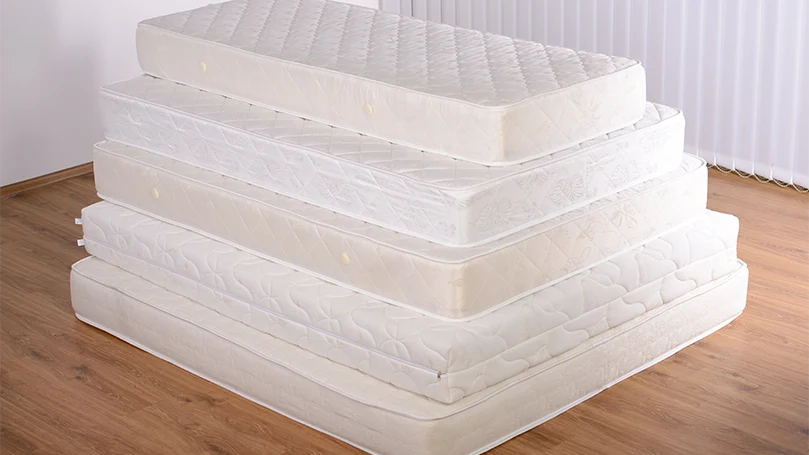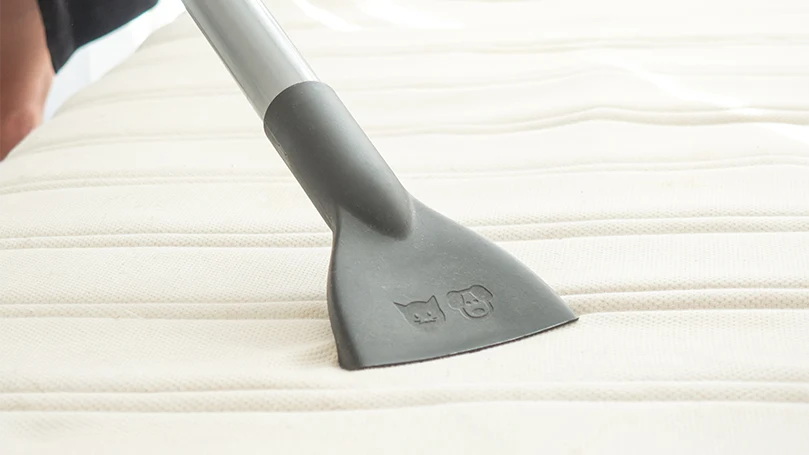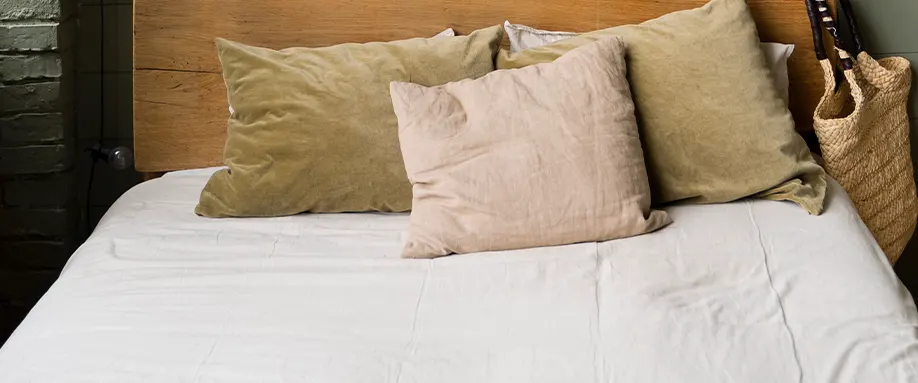What is a mattress warranty?
According to CMA or Competition and Markets Authority, every manufacturer or seller of expensive products, including mattresses, is legally obliged to provide a warranty for their products. That is how you protect the customers' interests and prevent manufacturers and sellers from distributing faulty goods without any repercussions.

Generally speaking, what this means is that the manufacturer or the seller is legally obliged to repair or replace any faulty product, in this case, a mattress, in the events that it is proven that the said flaws are the fault of the manufacturer or the seller, and not the customer.
Furthermore, every warranty must be shared in writing, meaning that the customer must have a written or printed copy of the official warranty if he or she wishes to make a claim.
Types of mattress warranties
Before we move on to a more detailed analysis of the mattress warranty, we have to mention that not all warranties are the same. As a general rule of thumb, there are three main categories of mattress warranties – prorated, non-prorated and combination warranties.
Let’s take a look at what makes these different from one another.
Prorated warranty
Prorated warranty is one of the most common warranties in the bedding industry due to the nature of the products that are being sold – including mattresses.
What prorated warranty entails is that you must pay a previously calculated fee or a certain percentage of the cost if you wish to repair or replace your mattress. The prorated fee will increase over time as mattresses begin to gradually deteriorate after prolonged usage.
Since your mattress becomes more succumbed to damage over time, the prorated fee increases, and it is not uncommon for customers to have to cover up to 90% of the repair or replacement cost in the final year of the warranty. The same thing applies to refunds. The older the mattress is, the less of the initial value of the mattress will you receive in the end.
Non-prorated warranty
Non-prorated warranties are the exact opposite of prorated warranties, which you can probably tell from the name. These aren't as common, as you would've guessed, mainly because it is not a good business model for the manufacturer.
With non-prorated warranties, you are guaranteed a replacement or a repair entirely free of charge during the specified warranty period. As we've already said, these are very hard to come by in the mattress industry, but not impossible, as you'll see in just a moment.
The only possible downside of the non-prorated warranty would be the fact that you would often have to pay the shipping or the transportation costs, which aren’t always as affordable as you would’ve liked them to be.
Combination warranty
A combination warranty, as you can tell from the name, is the combination of both previous types.
For instance, you could purchase a mattress that's covered with a non-prorated warranty for the first couple of years and a prorated warranty for the remainder of the warranty period. These are not as hard to come by as regular non-prorated warranties, although they are usually reserved for high-quality, premium mattresses.
Furthermore, these are also often the ones that extend over a long period of time, for instance, 15 to 25 years, and you will rarely find a combination warranty that covers less than that.
Mattress warranties important terms to remember
As we’ve already mentioned, not all warranties are the same, but it is not only the type of warranty that can vary. Different warranties have different terms and conditions. They usually vary from product to product, and manufacturer to manufacturer, so it is always important to thoroughly examine the warranty once you get it. Here are the terms that you should pay closer attention to.

Length
The length of the warranty is a pretty self-explanatory term. It determines the period of time during which the mattress you’ve purchased is covered by the manufacturer.
The length of the warranty will vary depending on the mattress and the manufacturer. More often than not, the warranty will extend anywhere from five to twenty years. Lifetime warranties are not that common for mattresses, but they could be found.
Finally, one important thing to note is that the warranty starts from the moment you purchase the mattress, not from when you start using it.
Coverage
Generally speaking, mattress warranties will cover the production defects such as faulty stitching, split seams, broken coils or some other structural flaws. Apart from those, mattress warranties will usually cover defects like extensive or pre-mature sagging or non-recovering body impressions in memory foam mattresses, for instance.
The thing to remember here is that sagging and body impressions happen over time as a part of usual wear and tear, however, as long as that’s been accounted for by the manufacturer, as a natural mattress regression – it is typically not covered by the warranty.
Type of coverage
Another thing to consider is the type of coverage the manufacturer offers. The type of coverage is essentially the way that you will be compensated if you file a warranty claim.
In general, it is one of these three things – mattress repair, mattress replacement or a refund in the form of cash or store credit.
Voidance
Arguably the most important thing to pay attention to when it comes to warranty terms is voidance. It is much easier to void a warranty than you might think.
In order to qualify for replacement, repair or a refund, you have to properly take care of your mattress. That includes flipping or rotating the mattress according to the manufacturer's instructions, not removing any tabs or tags or simply product misuse. Keep in mind, non-removable stains will usually void your warranty, so think twice about eating in bed.
What does a mattress warranty cover?
Now that we've covered that, you have to pay attention to the mattress coverage and what it basically is, so let us take a look at what a mattress warranty will cover.
First of all, the mattress warranty will cover any physical defects that are the manufacturer's fault. That includes, but is not limited to – faulty seams or stitching, coil breaks, bents or pops, the top cover fabric bunching etc. Keep in mind, all of these defects could be the result of improper use, so make sure you follow the appropriate maintenance and usage rules.

Next up, the mattress warranty will cover sagging. Sagging is one of the most common problems mattresses face, but once again, it is something that will happen gradually over time, so you will have to prove that the sagging is excessive or it has happened too early in order for you to receive compensation. This should be easy to check. All you'd need is a string and ruler. Drag the string across the mattress in a straight line and measure the distance between the string and the lowest point of the mattress.
Is there anything mattress warranty does not cover?
On the other hand, there are some defects and damages that are not covered by the warranty.
One of those is sagging that is the result of natural wear and tear, as well as the sagging that isn’t deep enough. For most sagging to be considered excessive, it would have to be deeper than 1.5 inches, and it would have to happen relatively quickly, as that would indicate structural damage, not wear and tear.
Also, any damage inflicted to the mattress that's the user's fault isn't covered by the warranty. That includes accidental tears or scratches, discolouration, non-removable stains or damages inflicted by improper care for the mattress.
By improper care, we mean not flipping or rotating the mattress according to the guide received along with the mattress. Many believe that this can’t be proven, but it sure can. The mattress will naturally “break-in” after some time, and there will be evidence of flipping and rotating or lack thereof if you haven't done it.
What can void a mattress warranty?
There is more than one thing that can void a mattress warranty.
The first and most common way people unintentionally void their warranty is by removing the “law tag”. Every mattress has a tag or a tab with basic information written on it, alongside text that says “Do not remove under the penalty of law”, or something along those lines. This tag serves as proof of purchase, and if you remove it – you will instantly void your warranty.
Next up, gifting or selling the mattress to anyone will automatically void the warranty. A warranty claim can only be filed by the original buyer, and the ownership of the mattress can’t be transferred to anyone.
Also, improper care and misuse of the mattress is cause for voidance. Any stains or physical damages that are a direct result of the user misuse will automatically void the warranty. Furthermore, failing to take proper care of the mattress, i.e. not flipping and rotating the mattress, will also result in the voidance of a mattress warranty.
Finally, failing to unpack the mattress for an extended period of time (upwards of 2-3 weeks) will result in voiding the warranty.
What are the advantages of owning a mattress warranty?
There are several obvious benefits to owning a mattress warranty.
First of all, you are financially protecting yourself from having to have to pay for a faulty product. If anything happens to a mattress, you always have your warranty to fall back on. You'll either get a new mattress or an appropriate refund – either way, you'll get yourself a new, proper mattress without having to spend hundreds of pounds all over again.
Next up, a mattress warranty will give you peace of mind. Knowing that company stands behind their product, and if willing to compensate you in case something goes wrong, instils confidence in people to buy the product and not worry about wasting their money.

Finally, a mattress warranty could potentially save you some money when it is finally time for an upgrade. Mattresses aren't cheap, and knowing that you can get something back from your original investment makes upgrading to a new, better mattress a lot easier on the wallet.
- Your financial interests are covered.
- It instils confidence and offers a piece of mind.
- It could save you money in the long run.
Filing a mattress warranty claim
Filing a mattress warranty claim can also differ depending on the manufacturer.
In the most common scenario, you will be asked to provide a document with a picture or a detailed written description of the defect to the manufacturer or seller, either via email or in regular mail.
That is usually followed by a clear set of instructions on how to proceed with the claim, including how to file official paperwork. If this doesn’t work out, you can always turn to FTC for help.
In some cases, although not commonly, a manufacturer might send an official inspector to verify the claims you’re making.
Generally, you will have to pay some amount of money during the filing process. However, if the claim ends up being approved, you will often be reimbursed, although that is not guaranteed.
What does a standard mattress warranty cover?
Under typical circumstances, a standard mattress warranty will cover manufacturing or craftsmanship details. As we've previously mentioned, these refer to faulty seams or stitching, bent, broken or otherwise defective springs or out-of-the-box defects and tears to the fabric.

Usually, standard mattress warranties last ten years, rarely longer than that. Also, more often than not, they are prorated warranties, meaning as time goes by – the coverage becomes less and less valuable.
How to extend the lifespan of your mattress?
In order to avoid having to fall back on the warranty or at least postpone it, you may have to do a couple of things to prolong the mattress's lifespan. Here's how you can do it.
Mattress protector
The best way to prevent voiding your warranty and extend the lifespan of your mattress is by using a mattress protector.
Now, these are not to be mistaken with mattress toppers. Even though toppers arguably do a better job at protecting the mattress, they’re rarely used as a protective layer. For instance, memory foam mattresses can really benefit from a mattress protector. Since we sweat during the night, it would be best if that sweat wouldn’t reach the foam and would remain on the surface – which is what mattress protectors are for.
A mattress protector also protects your mattress from discolouration, stains, accidental scratches and tears and so on. As all of those can void your warranty and ruin your mattress, we would always recommend using a protector.
A high-quality bed frame
Another thing that can prematurely ruin your mattress is a bad bed base. This could also be a contributing factor to voiding the warranty, so you have to make sure your mattress is adequately supported.
High-quality bed frames go a long way. It doesn't matter whether the frame has a solid or a slatted base. As long as it's high quality and fitting for the mattress – it'll make it last longer.
Avoid keeping your mattress on the floor, or DIY bed frames, as you could easily damage both the cover and the structural integrity of the mattress.
Regular maintenance
There is a reason why manufacturers recommend flipping and rotating the mattress every once in a while. Mattresses will undoubtedly contour around your body and sag over time – that's called breaking in. However, if you don't allow it to evenly break-in, and continue repeatedly sleeping in the exact same spot in the exact same position – you'll damage it. In addition, you should wash your mattress and keep it clean as much as you can.

Furthermore, most high-quality mattresses come with removable covers. Most of those are machine washable, so wash them regularly to avoid discolouration, stains, or simply dust and allergen build up using a vacuum cleaner.
No drinking or eating in the bed
Even if you've put on a mattress protector over your new mattress – eating and drinking in your bed should be off-limits. Sure, it's cool to devour snacks in the bed while you're binge-watching your favourite show, but that's the easiest way to stain the mattress and void the warranty.
Not only that, but crumbs and all the other food-related things can easily lead to bed bugs and other nasty creatures that we assume you don’t want to be spending the night with.
Also, wetting memory foam mattresses will not only leave a stain but will also structurally damage the foam, significantly shortening the lifespan of your mattress.
No jumping on the bed
Once again – it sounds fun, it is fun, but you really shouldn't do it. Perhaps you've read somewhere that the best way to break in your bed is to jump all over it. That's not true. While it is true that you could have your children walk all over the bed during the first day or two, that does not mean you or anyone else should jump all over it.

Jumping can cause coils to break or bend or even pop out of the mattress cover. Also, you could disrupt carefully placed memory foam or pocket spring layers, which could also significantly affect the life expectancy of your mattress.
Spread the word
FAQs about your mattress warranties
In the end, we wanted to wrap up our guide by answering a couple of the most frequently asked questions about mattress warranties.
It depends. Usually, the mattress warranties last anywhere from five to ten years, but they could be longer than that.
Many things can void a mattress warranty, including stains, tears, cuts or simply improper maintenance.
A lifetime warranty means that the warranty coverage will extend for an “unlimited” amount of time, providing that the mattress has been appropriately taken care of.
No. You only get a warranty if you're the original buyer and are buying from a verified reseller or directly from the manufacturer.
A sleep trial period is a trial period, usually lasting around 100 nights, during which you can determine whether you want to keep the mattress or not.
A limited warranty will cover only the specific parts of the product or specific defects or conditions.
A full warranty is a warranty that covers the entire product.















There are no comments yet
"*" indicates required fields